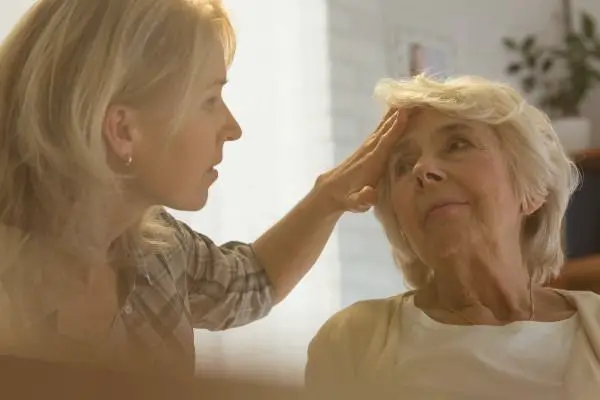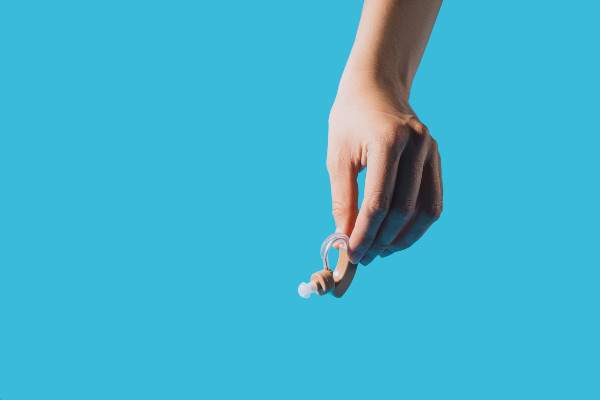Introduction
Living with sensorineural hearing loss (SNHL) can pose significant challenges, especially for seniors. Fortunately, the leaps and bounds of technological innovation have been instrumental in creating solutions that enhance the quality of life for this group. This journey through the landscape of SNHL technology will cover hearing aids, cochlear implants, smartphone applications, assistive devices, and the exciting frontiers of artificial intelligence and machine learning.
This journey is not just about technology, but also about empowerment and independence for seniors with SNHL. As these individuals navigate the challenges of hearing loss, the remarkable progress in this field gives us reasons to look to the future with optimism. This blog post aims to shed light on these technologies, highlighting their transformational impact, while also discussing the future of this exciting field.
While this blog post will be informative and detailed, it should not replace professional medical advice. Please consult with healthcare professionals for specific recommendations or diagnoses. Now, let’s embark on this technological odyssey, exploring the impact of various technologies on the lives of seniors with SNHL.
Tweak Digital Hearing Amplifier
Experience the epitome of sophisticated sound with Tweak, the revolutionary device that brings a new dimension to your auditory experience. Harnessing the power of innovative patented technology, Tweak offers you the freedom to fine-tune your hearing with a diverse range of amplification options. Whether you prefer a subtle enhancement or a more pronounced boost, Tweak empowers you to effortlessly customize your acoustic world.
Crafted with meticulous care and expertise, Tweak represents the brilliant collaboration between an esteemed audiologist and a team of dedicated acoustic engineers. Their collective passion for impeccable sound quality shines through in every detail of this remarkable device. Designed to elevate your hearing capabilities across any environment, Tweak utilizes cutting-edge technology to ensure that you can fully engage with the sounds that matter most to you.
Unlock the extraordinary potential of affordable sound quality with Tweak. By leveraging the latest advancements in digital technology, this ingenious device delivers an auditory experience that rivals that of prescription hearing aids. With premium-grade components at its core, Tweak offers you uncompromising performance without breaking the bank. Immerse yourself in a world of enhanced sound, where clarity and richness seamlessly merge to create an exceptional listening experience.
Hearing Aids and Sensorineural Hearing Loss: A Technological Journey
Over the years, hearing aids have undergone extensive evolution. From the ear trumpets of the past to the sophisticated digital devices of today, they remain one of the most common interventions for sensorineural hearing loss. Modern hearing aids come equipped with features like noise reduction, directional microphones, and connectivity with other digital devices, significantly enhancing auditory experiences for those with SNHL.
As we look to the future, we see ongoing advancements promising even more sophisticated solutions. For instance, there’s active research in developing “smart” hearing aids that can analyze the sound environment and adapt in real-time. These continuous improvements illustrate the resilience and resourcefulness of human innovation, dedicated to improving the lives of those living with SNHL.
The Future of Cochlear Implants for Sensorineural Hearing Loss
Cochlear implants, another transformative invention, have revolutionized treatment for severe to profound sensorineural hearing loss. Unlike hearing aids, which amplify sound, cochlear implants bypass the damaged part of the ear and stimulate the auditory nerve directly.
Looking forward, the horizon of cochlear implant technology brims with possibility. Current research is focusing on refining the technology to enhance sound quality, improving speech understanding in noisy environments, and even integrating artificial intelligence to optimize the user’s auditory experience. Furthermore, there’s ongoing exploration of combining cochlear implants with drug delivery systems to protect or regenerate auditory nerve cells, further showcasing the exciting advancements that lie ahead.
Smartphone Apps: Aiding the Sensorineural Hearing Loss Community
With the advent of smartphones, a new realm of assistive technology has emerged for individuals with sensorineural hearing loss. Various applications now offer features such as real-time captioning, sign language interpretation, and sound amplification. For seniors, who might experience other forms of age-related sensory decline, the ease of use and accessibility of these apps make them a powerful tool.
As app technology continues to develop, future iterations promise more personalized and user-friendly options. For instance, apps could be designed to ‘learn’ from the user’s behavior and automatically adjust the settings of connected devices based on different environments. The growing integration of health tracking in smartphones could also pave the way for apps that monitor auditory health and provide alerts or recommendations, making smartphones an even more critical ally for seniors with SNHL.
Technological Innovations: Assistive Devices for Sensorineural Hearing Loss
Beyond hearing aids and cochlear implants, there exists an array of assistive listening devices (ALDs) that can make daily life easier for seniors with SNHL. These include amplified telephones, television listening systems, and alerting devices that use visual signals or vibrations for alarms and doorbells. Technological innovations have also given rise to FM systems and induction loop systems, which can provide significant benefit in challenging listening environments like theaters or lecture halls.
Assistive devices are a testament to how technology can adapt to fulfill specific needs. For seniors with SNHL, they can provide a layer of convenience and comfort in the home or public spaces. As we continue to push the boundaries of what technology can do, we can look forward to a future where even more innovative and tailored solutions are available to enhance the daily lives of individuals with SNHL.
Revolutionizing Sensorineural Hearing Loss Treatment Through AI and Machine Learning
AI and machine learning represent a thrilling frontier in the world of sensorineural hearing loss. AI technology is currently being explored to improve hearing aid functionality by enabling these devices to learn from user preferences and adjust accordingly. Additionally, AI is being used in the development of sophisticated speech recognition systems, which could prove to be a game-changer for those with SNHL.
On the other hand, machine learning algorithms are being harnessed to predict the success of cochlear implantation and to tailor the device programming to individual patients. This approach could ensure a more successful outcome and better patient satisfaction.
As we continue to explore the potentials of AI and machine learning, their application in SNHL treatment could drastically change the landscape of the field, making treatments more efficient and personalized than ever before.
NAVIGATING THE DIFFERENT LEVELS OF DEAFNESS
Success Stories: Children Overcoming Sensorineural Hearing Loss
Despite the challenges associated with sensorineural hearing loss, countless children demonstrate remarkable resilience and tenacity. Stories abound of children with SNHL who, with the support of early interventions, assistive technology, and educational accommodations, excel acadically, thrive socially, and achieve remarkable success. Such stories illuminate the possibilities that exist when barriers are removed and the right support is in place.
These success stories, while inspiring, should not be viewed as anomalies but as attainable outcomes. They underscore the importance of comprehensive support systems and the transformative power of resilience, further cementing the argument for widespread, equitable access to interventions and resources for children with SNHL.
Tinnitus: why it’s still such a mystery to science
Conclusion
This exploration of the technological advancements for seniors with sensorineural hearing loss paints a picture of a dynamic and rapidly advancing field. It’s a realm where ingenuity and compassion meet, as developers and researchers work tirelessly to improve the quality of life for individuals with SNHL.
The constant advancements in hearing aids, cochlear implants, smartphone apps, assistive devices, and the ongoing exploration of AI and machine learning promise a future where sensorineural hearing loss is no longer a barrier to communication and a fulfilling life. They promise a future where technology serves not just as a tool but also as a companion in navigating the world of sound.
As we move forward, it’s crucial to stay informed about these advancements. It’s not just about knowing the latest devices or apps; it’s about understanding the capabilities of these technologies and how they can cater to unique needs. It’s about making the most of these innovations in our pursuit of a world without barriers for those with SNHL.
While we celebrate these advancements, we must also remember the importance of continuous research and investment in this field. Only through ongoing innovation can we continue to improve the lives of seniors with SNHL.
Finally, the remarkable progress in this field gives us reasons to look to the future with optimism. It is a testament to human resilience and innovation, dedicated to improving the lives of those living with SNHL. This is the journey we are on, and it’s a journey that holds promise for a more inclusive and accessible world.









